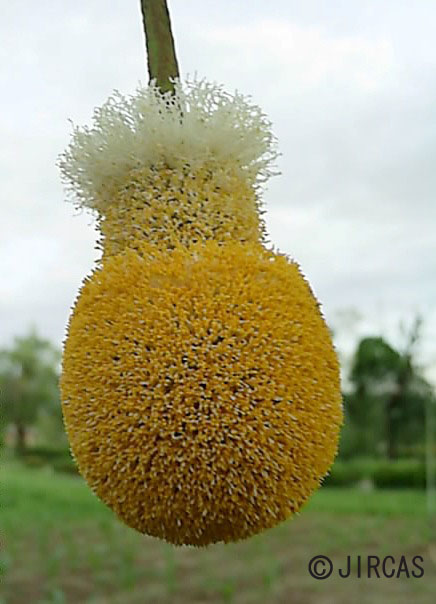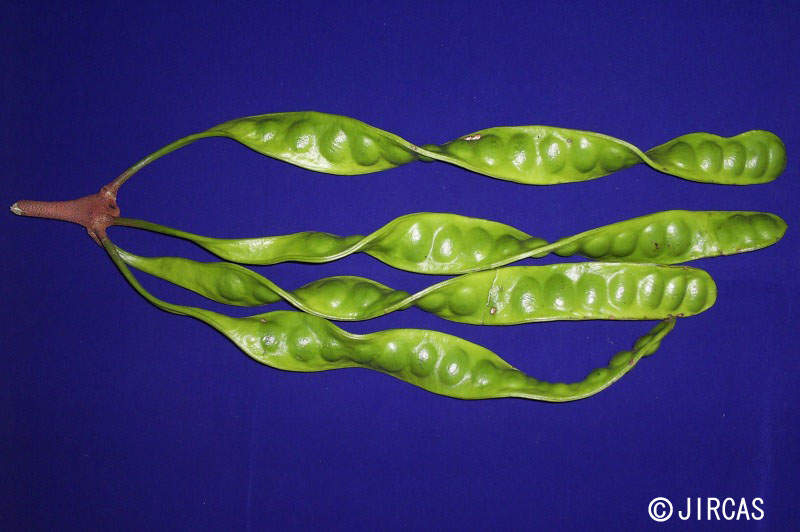Parkia speciosa Hassk. (Fabaceae)
- Scientific name
- Parkia speciosa Hassk.
- Family name
- Fabaceae (Syn. Leguminosae)
- Common name
- Patai (English); nejire fusamame (Japanese)
- Local name
- Sator
Tree up to 30 m tall. Leaves alternate, bipinnate, base at one side expanded into an apiculate auricle, apex rounded, mucronate. Inflorescence a pear-shaped pendulous head, 2–5 cm in diameter. Flowers small, numerous, brown-yellow, male or asexual at base of head; calyx and corolla tubular, 5-lobed, stamens (staminodes) 10, filaments at base united into a tube, ovary stipitate. Fruit a legume on a long stalk, usually strongly twisted and prominently swollen over 12–18 seeds. Seeds broadly ovoid, horizontal in pod, testa very thin, white.
Wild trees are found in primary and secondary forests at low elevations. Cultivated at elevations up to 1,500 m. a.s.l. Propagated by seed sowing in seed beds; seedlings are transplanted to permanent sites.
Seeds are eaten raw or cooked with shrimp paste in phat sator sai kapi (stir-fried shrimp with stink-bean). Seeds contain 71 g water, 8 g protein, 8 g fat, 11 g carbohydrates, 76 mg calcium, 83 mg phosphorus, 1 mg iron, 734 IU vitamin A, 0.1 mg vitamin B1, 0.01 mg vitamin B2, 1 mg niacin, and 6 mg vitamin C per 100-g serving.
Seeds are eaten raw or cooked with shrimp paste in phat sator sai kapi (stir-fried shrimp with stink-bean). Seeds contain 71 g water, 8 g protein, 8 g fat, 11 g carbohydrates, 76 mg calcium, 83 mg phosphorus, 1 mg iron, 734 IU vitamin A, 0.1 mg vitamin B1, 0.01 mg vitamin B2, 1 mg niacin, and 6 mg vitamin C per 100-g serving.





